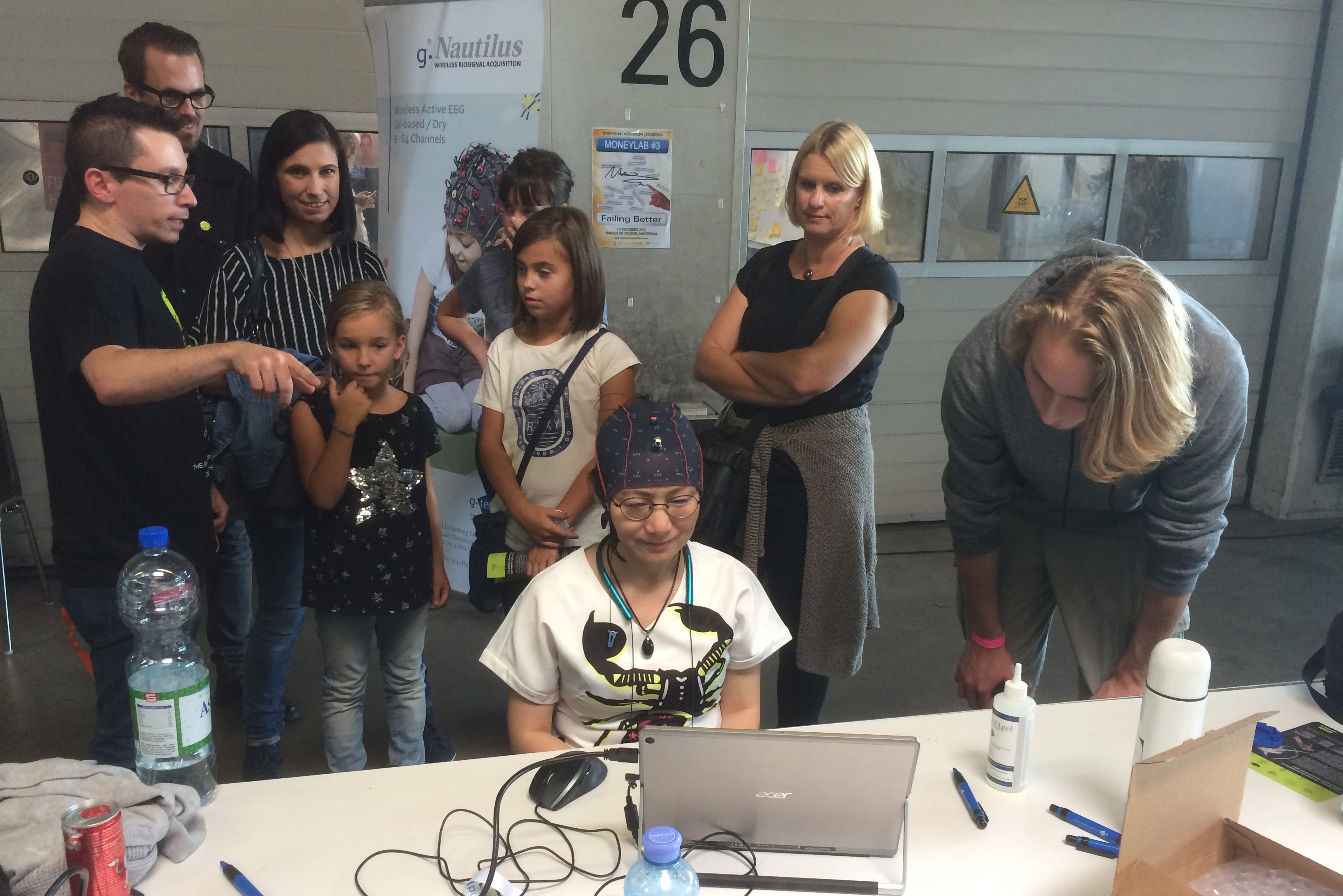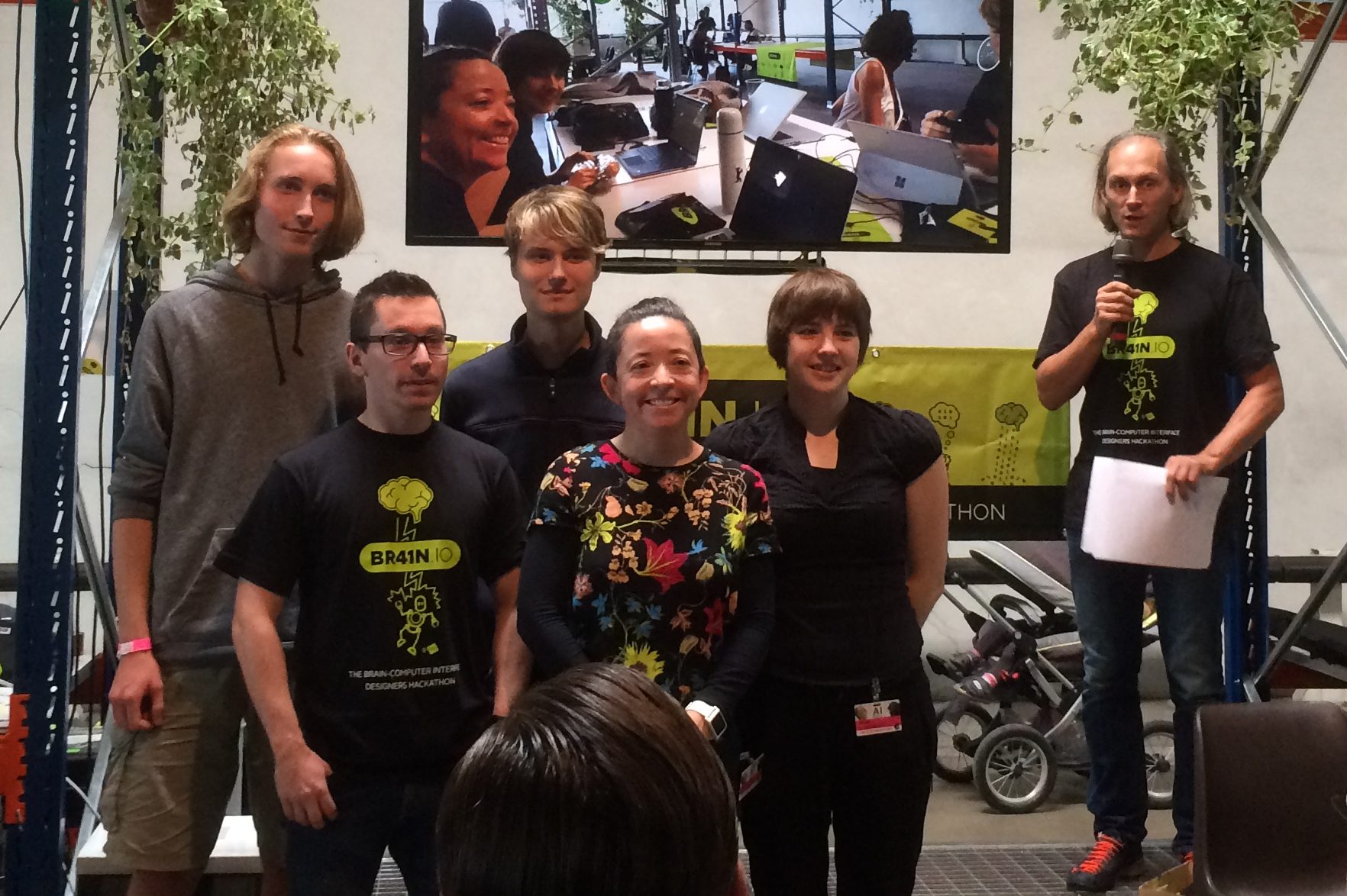In a hackathon, you have 24 hours to complete a task as a group. The BR41N.IO Hackathon is generally about reading and processing brain waves using electroencephalography (EEG). Each group has been provided with a so-called EEG headset, which consists of many electrodes, a head cover and an interface to the PC. These electrodes are inserted into the headgear and wired up, after which a gel is injected between the scalp and the electrodes to facilitate contact between the electrodes. In addition, a clip is attached to the earlobe to provide a reference voltage with which the brain waves can be compared. The individual electrodes can measure distinctive brain waves at the position where they are located, which means that the electrodes have to be distributed differently for different applications. We mainly worked with the P300 wave, which is triggered when something unexpected happens. If you look at a sign on the screen and it flickers, this wave is triggered. This can be used, for example, to write texts simply by looking at an irregularly flickering screen keyboard using only brain waves. Our task was to use this P300 wave to control a computer game in the Unity game engine. We also used the intendiX software to calibrate the headset and analyse the data. Due to the very limited time of 24 hours, the game was not particularly extensive. Nevertheless, we managed to create a 3D puzzle game with several levels and a scene with an interactive animation at the end. You play in the first-person perspective and are automatically taken to the next level after completing it. You use your head to control switches, usually labelled with symbols, which have an effect on the level. To get started, however, you only need to concentrate on the symbol on the door, after which you will be taken to the actual puzzles.


